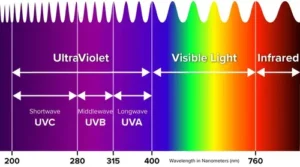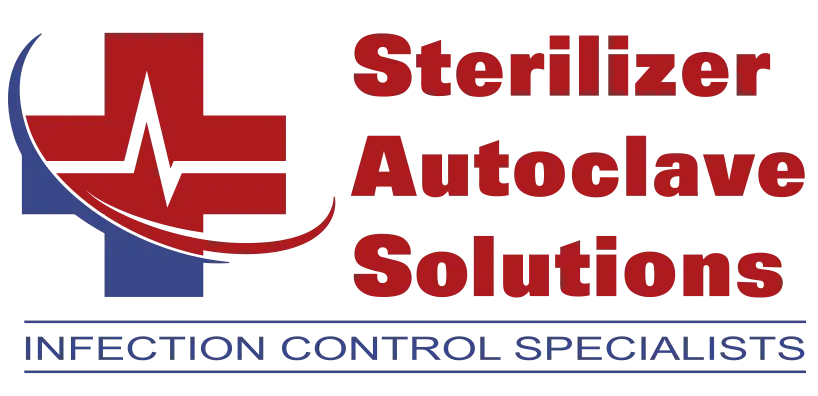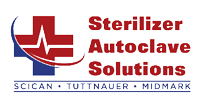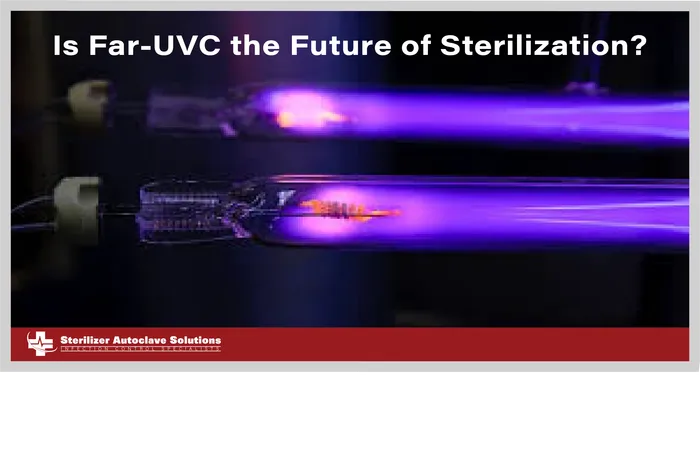Is UV-C the Future of Sterilization?
Could UV-C light be a new way to sterilize? Or could we even see an ultraviolet solution to all medical tools in the future? What about the possibility of a UVC-based autoclave or sterilizer?
Far-UVC light is a very promising technology for decontamination in the medical industry. It’s an innovative approach that harnesses a specific wavelength on the ultraviolet light spectrum. Approximately 222 nanometers have proven effective against harmful microorganisms present on surfaces.
Recently, Infection Control Today released an article detailing a study done with the use of far-UVC lights and their effectiveness. Showing decontamination results against wheeled transport and physical therapy equipment. So in this article, we’d like to talk about the article in question, and ask an interesting question: could UV-C be the next big name in disinfection?
The Study
Infection Control Today published an article talking about a study on Far-UVC lights being an effective method of decontamination.
The study was conducted at Cleveland VA Medical Center, and was performed and evaluated using krypton-chloride excimer lamps (example right), that emit a narrow UV-C light spectrum. These wall mounted devices are equipped with motion sensors to power off, ensuring the safety of anybody that comes near it.
near it.
There were significant findings with the study, demonstrating a substantial reduction in the presence of highly persistent and challenging pathogens. Specifically, the Far-UVC system proved effective in inactivating superbugs such as Candida auris and Methicillin-resistant Staphylococcus aureus (MRSA). The use of far-UVC has shown it can be particularly useful for difficult-to-clean items, where the human element may fall just short of standards.
Curtis J. Donskey, contact author of the study, said: “Adequate disinfection of shared portable equipment is a challenge in busy clinical settings,” and “Our results demonstrate that far UV-C light can be an effective adjunctive method for decontamination of equipment. Using a far-UVC technology that turns off when people are detected eliminates any potential safety concerns.”
The test was performed on found that contamination rates on wheeled transport chairs dropped from a 50% baseline to just 1.2% after 12 hours of exposure. And, while not as statistically significant, the use of UV-C lights on physical therapy equipment also showed promise.
Overall, the research indicated that the Far-UVC offers an automated and powerful solution to enhance infection control. It has the potential to augment traditional cleaning practices, and create an overall safer environment for patients. So now that you’ve seen what it can do, let’s circle back to the question at hand.
Could UV-C Be the Future of Sterilization?
Here’s the deal with ultraviolet light; UV-C lights, or Ultraviolet C, utilize a specific band within the electromagnetic spectrum that has germicidal properties.
germicidal properties.
It serves as an enhanced layer of protection by killing or inactivating an array of microorganisms by damaging their DNA or RNA. In turn, it prevents them from reproducing and spreading.
It’s powerful on it’s own, but one thing to note is that it’s not a cure-all for sterilization. Like anything, there are pros and cons to this technology. It’s not meant to be better or worse than anything else, it’s a complimentary method that can achieve high levels of disinfection with a little help. And UV-C lights are more effective when paired with manual cleaning or disinfection.
Let’s look at some of the pros and cons of UV-C disinfection to get a better idea of what we’re dealing with.
Pros
- Effective Germ Eliminator: UV-C light kills almost all types of bacteria, fungi and viruses, including ones like MRSA and COVID-19.
- Thorough: Like any light, UV-C can hit hard to reach areas that may be missed during cleaning.
- Consistent: Since it doesn’t require people to run it, the results of UV-C will be consistent without human error involved.
- Quick: UV-C lights can disinfect a room very quickly, seeing as no human can (currently) move faster than light.
- Lower Infection Rates: UV-C lights have been proven to help lower the rates of healthcare acquired infections (HAIs).
Cons:
- Weakness to Shadows: If there’s even a small shade or shadow that the dirt is shrouded by, that light has now become useless against it.
- Not Clean: We mentioned before, UV-C is not a method of sterilization, it’s purely a germ killer. It still doesn’t physically remove the dust and dirt.
- Damage Over Time: UV-C light has been proven to harm plastic and fabrics over time with overexposure.
- Safety Risk: Old UV-C lights used to be very bad for skin and eyes. While Far UV-C, like the one used in the study, is safer (note the “er”), it is still potentially harmful when dealing with overexposure.
- Cost: If you’re looking for a big investment, UV-C lights will cost you a pretty penny, so be careful in decision making.
The Verdict
So the question remains, is UV-C going to be the next solo operative in the ever-growing war on pathogens? Could there be a potential UVC sterilizer or even autoclave? Given the evidence of the study and research on UV-C light in the industry over all… The answer is most likely no, at least, not by itself. While it does kill pathogens and stops the spread, it’s light. It doesn’t physically remove anything from the surface you’re trying to clean. And the downsides to possible overexposure to it can lead to a significant risk to staff.
As for a UV-C autoclave or sterilizer, they’re meant to sterilize and also remove dirt and debris through porous materials in hard to reach areas of an instrument. We have ultrasonic cleaners that can remove debris, but UV-C light can’t induce a physical removal process like cavitation. So while UV-C light can kill pathogens and help disinfect things, at this point in time, there’s no feasible way to make an effective sterilizer using UV-C technology.
But if you’re interested in its capabilities, then look at the pros and cons objectively. UV-C technology in your practice may be very circumstantial. It is a very efficient way to eradicate and stop the spread of bacteria. But just keep all the facts in mind. Use it as a complimentary resource to your existing lineup. It’s another card to add to your hand to play in the battle against bacteria, it’s not an entirely new deck on its own.
So if you think you can effectively harness the power of far UV-C light, then turn your practice into the powerhouse it was meant to be. Just understand what it is that you’re actually getting.
Final Thoughts
While Far-UVC light demonstrates a remarkable decontamination efficacy, especially with large, hard to kill pathogens… It’s by no means a standalone tool. It has great power, but it can’t do all the work, it can only make one part of it much more efficient and effective. Far-UVC is best used in conjunction with traditional cleaning to ensure that there’s no spread of pathogens, and that anything cleaned is free of dirt and debris. But that’s not a downside by any means. Far-UVC can be utilized as an enhancement to your existing methods, giving you stellar decontamination power and peace of mind all at once. So while it may seem like a great idea, Far-UVC is by no means a one-man band.
IF you have any questions about infection control, sterilization, or anything else, give us a call at 704-966-1650. You can also find our other programs available for anyone, anytime, absolutely FREE using the links below.
As always if you have any questions about this process or anything else please feel free to contact us and take advantage of our “FREE TECH SUPPORT.”
We also offer FREE VIRTUAL TECH SUPPORT to “See and Talk” with a “Real Time Live Technician” for any problems you may be in need of help with.
You can also use our “FREE MAINTENANCE PROGRAM”. Take the guesswork and worrying about what unit is due for maintenance and which maintenance cycle it is time for. We will keep track of all your autoclaves and let you know when it’s time for anything.


